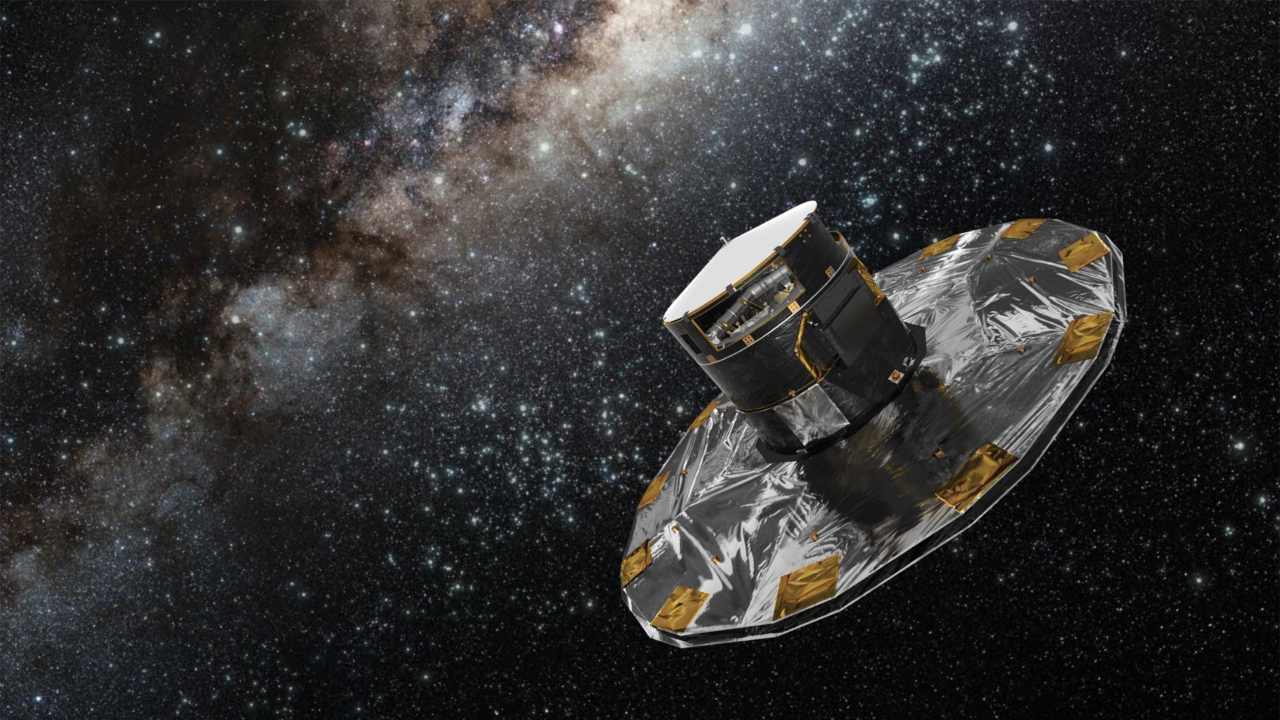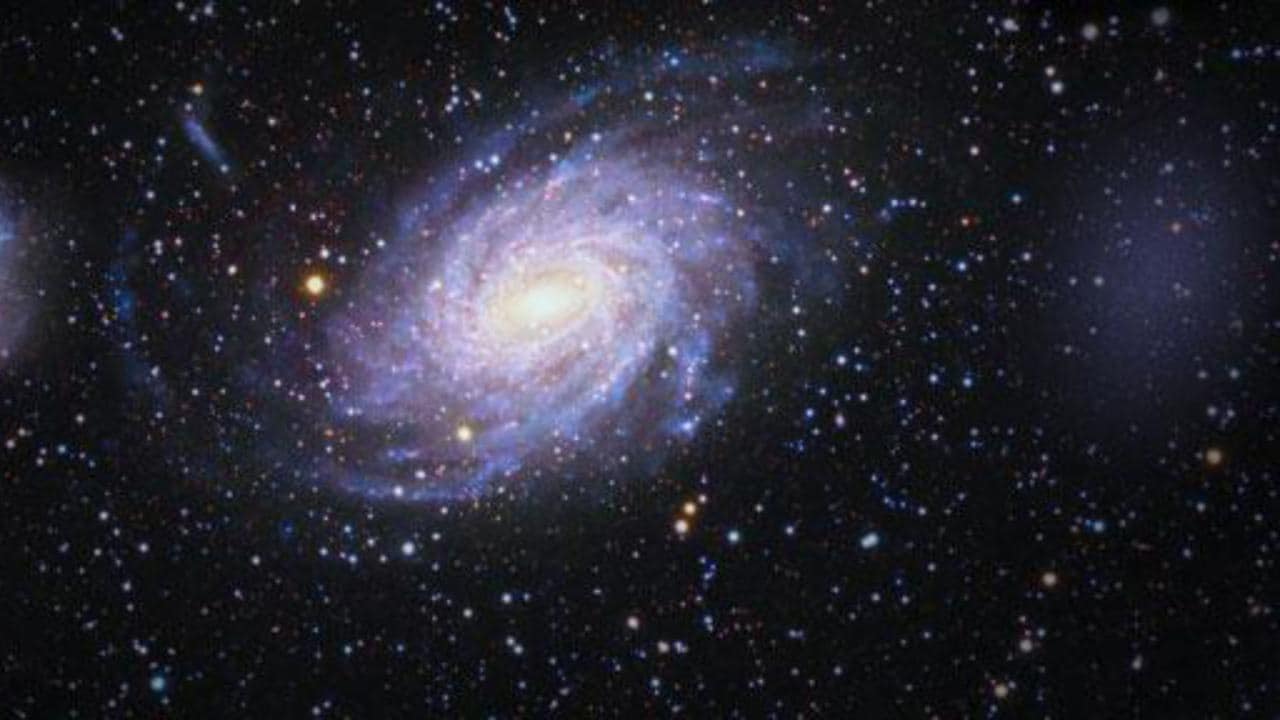
[ad_1]
tech2 News Staff
Nov 15, 2018 11:01 AM IST
Using data from the European Space Agency’s (ESA) telescope Gaia, a team of researchers discovered what appears to be an enormous ‘ghost’ galaxy lurking at the edges of our galaxy.
Gaia beamed back images of the galaxy, called Antlia 2, which appears very faint but roughly a third of the size of our Milky Way.
“This is a ghost of a galaxy,” Gabriel Torrealba, co-author of the study told university press.
“Objects as diffuse as Antlia 2 have simply not been seen before… Our discovery was only possible thanks to the quality of the Gaia’s data.”
The researchers used Gaia’s data about radiation coming out of the collection of 100 or so ‘red giant’ stars in Antlia 2 — just before a period of many months where Earth’s movement around the Sun makes the galaxy impossible to observe, let alone study.

An artist’s rendition of the faint Antlia 2 lurking to the right of our Milky Way. Image courtesy: ESA
With measurements from Gaia, researchers confirmed that the object they looking at is far from fiction: a collection of stars in Antlia 2 moving in perfect synchrony with one another.
Antlia 2 is what astronomers called a ‘dwarf’ galaxy. As planets and stars formed in the early Universe, dwarfs were among the earliest galaxies to emerge. This leaves many of their stars old and dim. Compared to other dwarf galaxies near the Milky Way, however, Antlia 2 appears immense, the researchers said.
“It is as big as the Large Magellanic Cloud (LMC).. and a third the size of the Milky Way itself,” the study reports.
There’s another peculiar aspect about our galaxy’s newfound neighbour — the already ‘dwarf’ galaxy Antlia 2 appears to be getting progressively shredded by our Milky Way. This, researchers think, could partly explain why the mass of the galaxy measure by the researchers doesn’t correspond to its ‘enormous size’ visible in Gaia’s images.
“The simplest explanation of why Antila 2 appears to have so little mass today is that it is being taken apart by the Galactic tides of the Milky Way,” Sergey Koposov, co-author of the study from Carnegie Mellon University, told university press.
“What remains unexplained, however, is the object’s giant size. Normally, as galaxies lose mass to the Milky Way’s tides, they shrink, not grow,” Koposov added.

An artist’s rendition of the Gaia telescope. Image courtesy: ESA
The discovery has prompted researchers to wonder just how many galaxies are hiding on the outskirts of our own, present but simple unobservable through conventional telescopes.
“Compared to the rest of the 60 or so Milky Way satellites, Antlia 2 is an oddball,” Matthew Walker, co-author from Carnegie Mellon University told the press.
“We are wondering whether this galaxy is just the tip of an iceberg, and the Milky Way is surrounded by a large population of nearly invisible dwarfs similar to this one.”
While researchers are also speculating that dwarf galaxies may appear inflated when vigorous star formation is taking place within, the authors of the study are yet to uncover exactly what make’s Antlia 2 so “expanded”.
Cracking that puzzle could help astronomers better understand how the early universe came to form, and just how common ‘ghost’ galaxies like Antlia 2 are, the authors said.
The study was recently pre-published in ArXiv.
[ad_2]
Source link